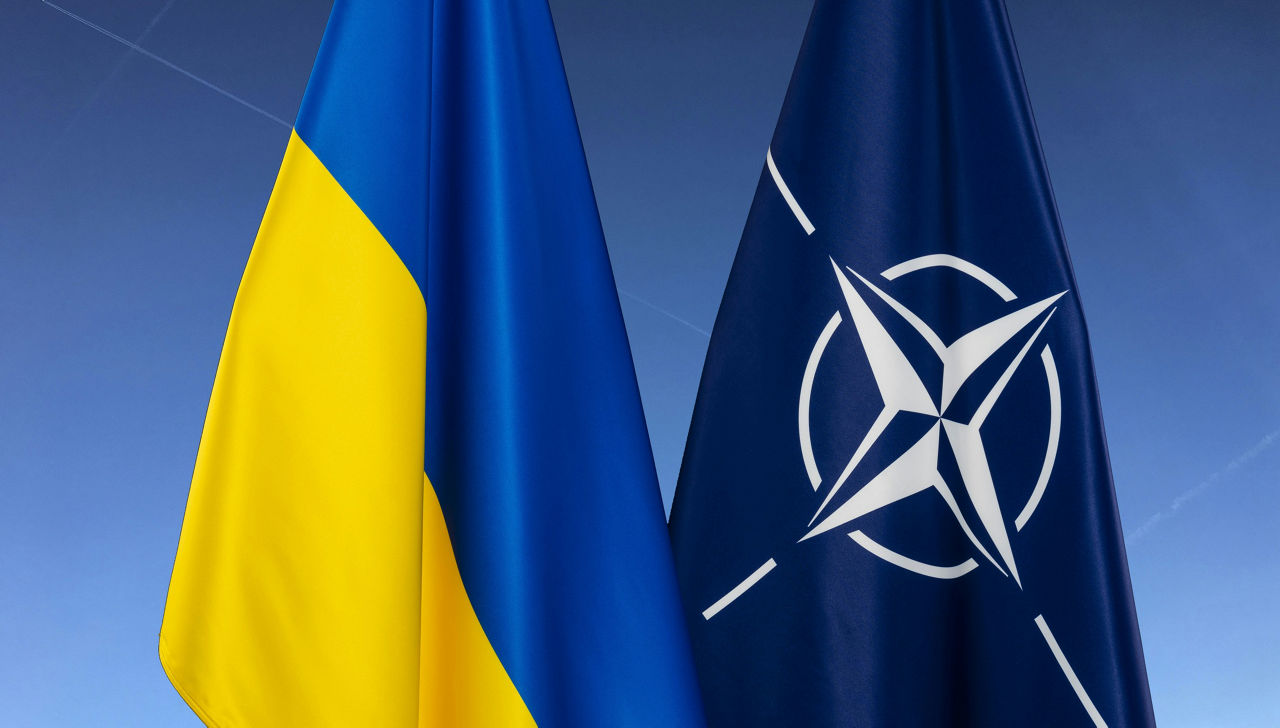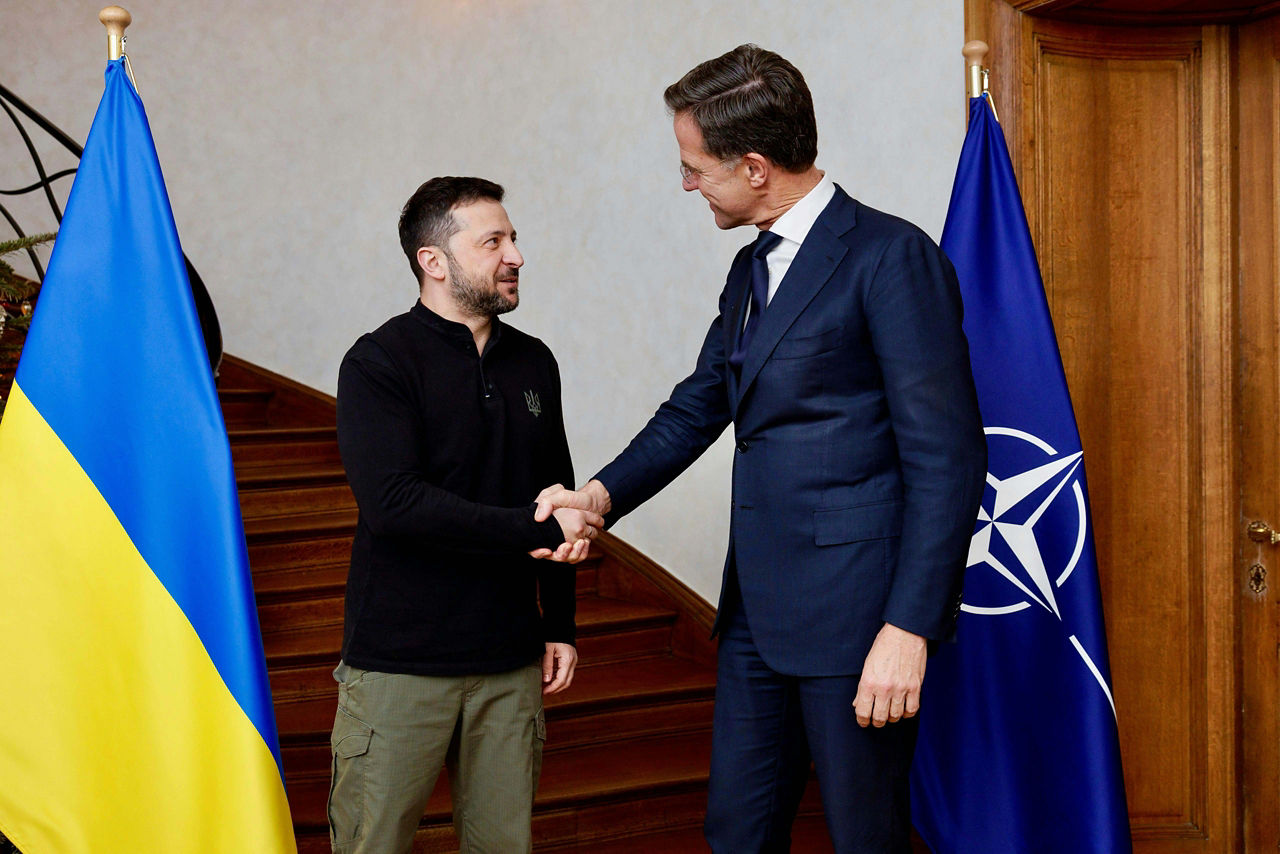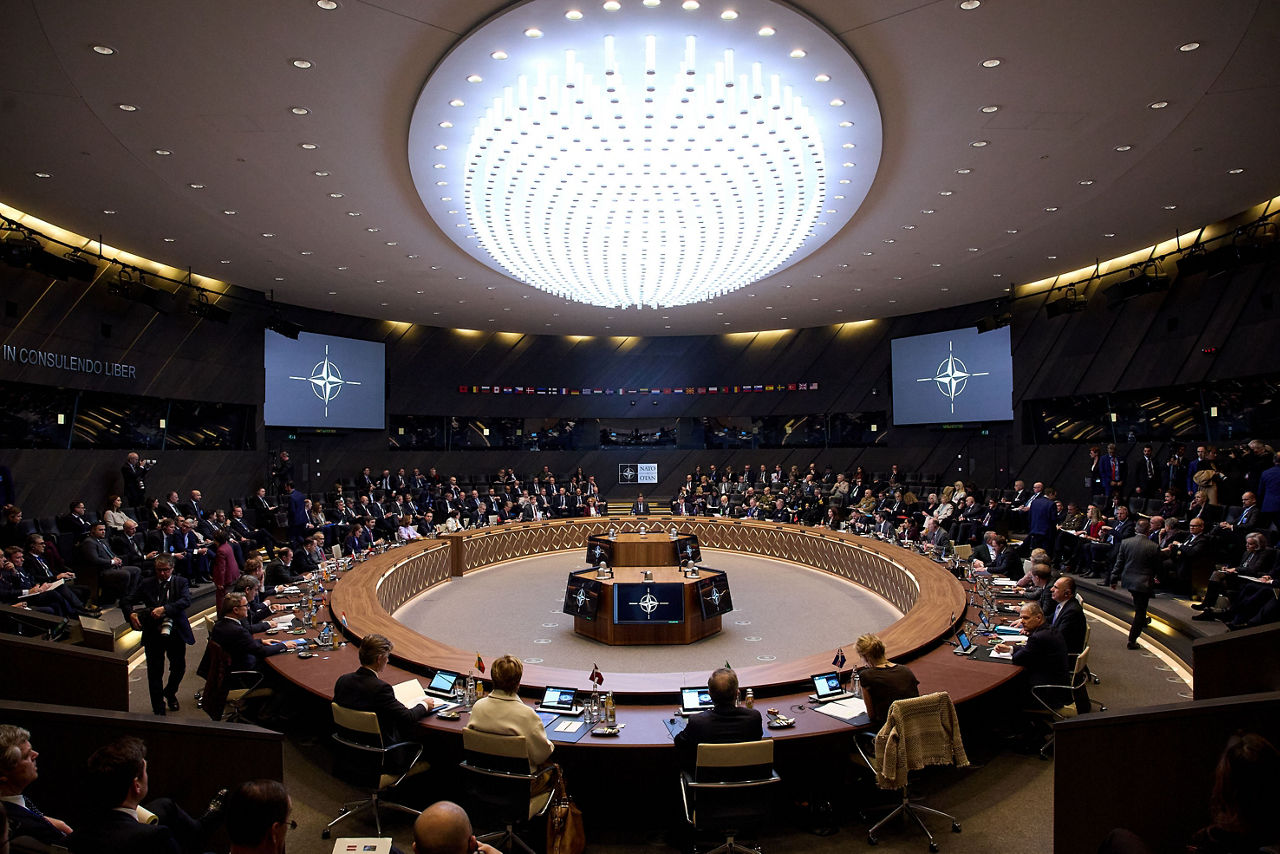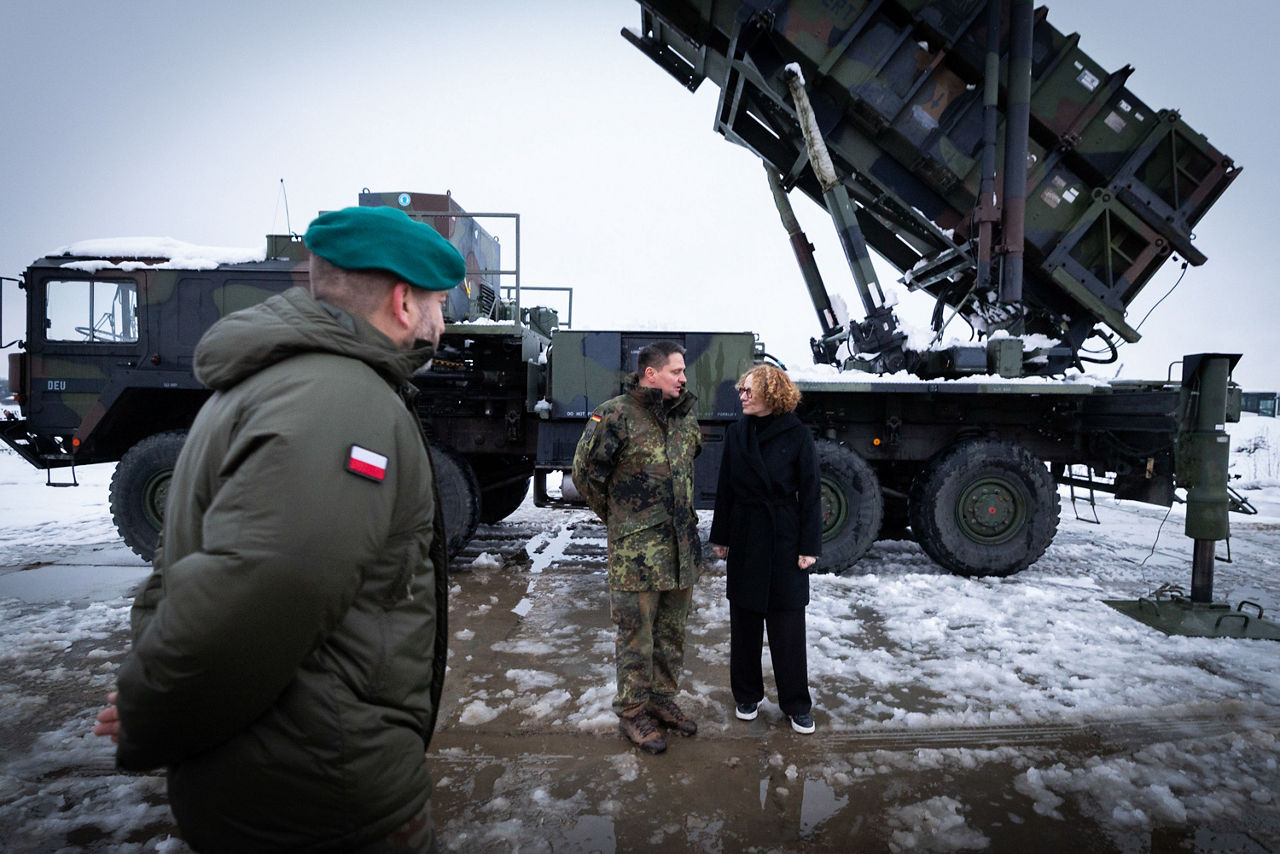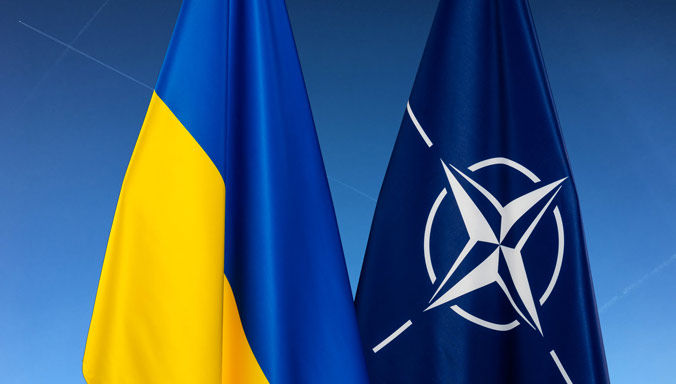Download NATO’s broadcast-quality video content free of charge

Log in
NATO MULTIMEDIA ACCOUNT
Access NATO’s broadcast-quality video content free of charge

Check your inbox and enter verification code
You have successfully created your account
From now on you can download videos from our website
Subscribe to our newsletter
If you would also like to subscribe to the newsletter and receive our latest updates, click on the button below.
Enter the email address you registered with and we will send you a code to reset your password.
Didn't receive a code? Send new Code
The password must be at least 12 characters long, no spaces, include upper/lowercase letters, numbers and symbols.
Your password has been updated
Click the button to return to the page you were on and log in with your new password.
NATO condemns Russia's brutal and unprovoked war of aggression against Ukraine in the strongest possible terms. Ukraine is an independent, peaceful and democratic country, and it has cooperated closely with NATO members for more than 30 years. This partnership has made both Ukraine and NATO stronger.
NATO supports Ukraine’s fundamental right to self-defence and is coordinating the delivery of aid from Allies and partners. Since 2022, NATO Allies have been providing Ukraine with unprecedented levels of military assistance, delivering billions of euros worth of equipment, supplies, training and other critical support.
The best way to help end the war and secure a just and lasting peace is to ensure that Ukraine can participate in any negotiations from a position of strength, and Allies are stepping up to ensure that Ukraine has the support it needs.
Key support activities
Through the Prioritised Ukraine Requirements List (PURL), NATO is coordinating the purchase of critical defence equipment from the United States by other NATO Allies. Under PURL, NATO’s Supreme Allied Commander Europe (SACEUR) regularly identifies packages of equipment and munitions that Ukraine needs and that the United States can provide in greater volumes than European Allies and Canada alone. Allies – individually or in groups – then agree to provide funding for these packages, and NATO coordinates the delivery of the equipment to Ukraine, including through NSATU (see below). Allies have already stepped up to fund USD 2 billion of military equipment from the US via PURL, and deliveries are underway.
Learn more: Secretary General welcomes first package of U.S. equipment for Ukraine funded by the Netherlands under new NATO initiative, 4 August 2025
Learn more: NATO Allies Denmark, Norway and Sweden announce $500 million package of support for Ukraine, 5 August 2025
Learn more: Germany to fund $500 million PURL package for Ukraine, 13 August 2025
Learn more: Canada to fund $500 million PURL package for Ukraine, 24 August 2025
Learn more: Nordic and Baltic Allies to fund joint $500m PURL package for Ukraine, 13 November 2025
NATO member countries are sending weapons, ammunition and many types of light and heavy military equipment to Ukraine, including anti-tank and air defence systems, artillery systems, munitions, drones, tanks and fighter jets. NATO's Article 5 security guarantee and its iron-clad promise of collective defence provides Allies with the confidence that they can send weapons to Ukraine without diminishing their own security. Furthermore, Allied forces are training Ukrainian troops to use this equipment. All of this is making a difference on the battlefield every day, helping Ukraine to uphold its right of self-defence, which is enshrined in the United Nations Charter. To coordinate all of these equipment donations and the training of Ukrainian forces, Allies have established NATO Security Assistance and Training for Ukraine (NSATU). Based in Wiesbaden, Germany, with three logistics hubs in the east of the Alliance, NSATU is staffed by nearly 700 personnel from Allied and partner countries.
Through NATO’s Comprehensive Assistance Package (CAP) and related funds, Allies have pledged over EUR 1 billion (approximately USD 1.1 billion) to meet Ukraine's critical needs for non-lethal aid. This includes cold-weather clothing, body armour, fuel, transport vehicles, secure communications, combat rations, demining equipment, medical supplies, and much more. In addition, under the CAP, Allies have committed to supporting Ukraine further with a multi-year assistance programme, which will help Ukraine transition from Soviet-era to NATO standards, training and doctrines; help rebuild Ukraine's security and defence sector; and continue to cover critical needs.
The NATO-Ukraine Joint Analysis, Training and Education Centre (JATEC) in Bydgoszcz, Poland is helping both Allies and Ukraine identify and apply lessons learned from Russia’s war against Ukraine. This contributes to NATO’s deterrence and defence, and increases the ability of Allied and Ukrainian forces to operate together effectively. The JATEC is staffed by both NATO and Ukrainian personnel. Since opening in February 2025, the Centre has carried out projects focused on air defence, protection of critical infrastructure and resilience.
To ensure that all of this support continues, Allies made a Pledge of Long-Term Security Assistance for Ukraine at the 2024 Washington Summit. Under this Pledge, Allies agreed to provide a minimum baseline funding of EUR 40 billion in 2024, and to provide sustainable levels of security assistance for Ukraine to prevail. Allies have far exceeded this commitment – providing over EUR 50 billion in 2024, almost 60% of which came from European Allies and Canada. In 2025, Allies have so far committed an additional EUR 35 billion in security assistance for Ukraine, and this support is expected to continue.
The NATO-Ukraine Council (NUC) is the joint body where Allies and Ukraine sit as equal participants to advance political dialogue, engagement, cooperation and Ukraine’s aspirations for membership in NATO. It provides for joint consultations, decision-making and activities. It also serves as a crisis consultation mechanism between NATO and Ukraine.
The NATO Representation to Ukraine (NRU) facilitates political and military dialogue and cooperation between the Alliance and Ukraine, and coordinates NATO’s practical support to Ukraine. Based in Kyiv, the NRU is headed by the NATO Senior Representative in Ukraine. The NRU is working closely with the Ukrainian authorities and with Allies and partners to help deliver support to Ukraine.
Many Allies are providing humanitarian aid to civilians and hosting millions of Ukrainian refugees. Allies are working with relevant stakeholders in the international community to hold accountable all those responsible for war crimes, including conflict-related sexual violence. Allies have also worked closely to support international efforts to enable exports of Ukrainian grain and to alleviate the global food crisis.
In the longer term, the Alliance is committed to assisting Ukraine and supporting efforts on its path of post-war reconstruction and reforms. All of these initiatives are further steps to bring Ukraine closer to NATO on its irreversible path to membership.
NATO’s support for Ukraine has grown to unprecedented levels since Russia’s full-scale invasion in February 2022. However, NATO’s support for Ukraine stretches back much further than this. Following Russia’s illegal and illegitimate annexation of Crimea in 2014, and its occupation of territory in the Donbas region of eastern Ukraine, NATO helped to reform Ukraine’s armed forces and defence institutions, including with equipment and financial support. Allies also provided training for tens of thousands of Ukrainian troops, and Ukrainian forces also developed their capabilities by participating in NATO exercises and operations. The Comprehensive Assistance Package (see above) was launched in 2016 to consolidate and expand this support, including through a wide range of capacity-building programmes focused on key areas like cyber defence, logistics and countering hybrid warfare. All of this assistance since 2014 helped Ukrainian forces withstand Russia’s full-scale invasion in 2022 and ensure the survival of their country as a sovereign, democratic nation.
Learn more: Relations with Ukraine
Learn more: Comprehensive Assistance Package (CAP) for Ukraine
Frequently Asked Questions
01. What is NATO?
NATO is a defensive alliance of 32 countries from Europe and North America.
Learn more: What is NATO?
NATO exists to defend its member countries and their one billion citizens. It does this by bringing together the governments and the armed forces of the 32 Allies, and by providing a security guarantee that an attack on one of them is an attack on all of them.
Learn more: NATO’s purpose
Learn more: Collective defence and Article 5
Ukraine is not a NATO member. Ukraine is a NATO partner country, which means that it cooperates closely with NATO but it is not covered by the security guarantee in the Alliance’s founding treaty.
Learn more: NATO member countries
Learn more: NATO partners
Yes. NATO member states (called ‘NATO Allies’) agreed at the 2008 Bucharest Summit that Ukraine will become a member of NATO, noting that its next step would be to submit an application to the Membership Action Plan (MAP), a NATO programme covering political, economic, defence, resource, security and legal reforms of aspirant countries. At the 2023 Vilnius Summit, Allies removed the requirement for Ukraine to pursue a MAP, which will change Ukraine’s membership path from a two-step process to a one-step process. At the 2024 Washington Summit, Allies stated that they will continue to support Ukraine on its irreversible path to NATO membership, reaffirming that they will be in a position to extend an invitation for Ukraine to join the Alliance when Allies agree and conditions are met.
Learn more: Relations with Ukraine
Learn more: Enlargement and Article 10
NATO’s actions are defensive, designed not to provoke conflict but to prevent conflict. The Alliance has a responsibility to ensure that this war does not escalate and spread beyond Ukraine, which would be even more devastating and dangerous. Enforcing a no-fly zone or deploying combat troops to Ukraine would bring NATO forces into direct conflict with Russia. This would significantly escalate the war and lead to more human suffering and destruction for all countries involved.
Learn more: NATO Secretary General press conference, 23 March 2022
NATO welcomes the efforts to negotiate a just and lasting peace as soon as possible. It is crucial that peace is secured with a sustainable deal, so that Russia never again attacks Ukraine or threatens any part of NATO. This will require security arrangements for Ukraine, and many Allies are actively discussing what that might entail. To reach a just and lasting peace, Ukraine has to be in the strongest possible position on the battlefield, and NATO Allies continue to provide Ukraine with extensive military assistance (see above). NATO’s support is not intended to prolong the war but to ensure that Ukraine has what it needs to defend itself today and deter future aggression.
Since Russia’s illegal annexation of Crimea and destabilisation of eastern Ukraine in 2014, NATO has adopted a firm position in full support of Ukraine’s sovereignty and territorial integrity within its internationally recognised borders. The Allies strongly condemn and do not recognise Russia’s illegal and illegitimate annexation of Crimea, and denounce its temporary occupation.
NATO also condemns Russia’s illegal attempt to annex four regions of Ukraine – Donetsk, Luhansk, Kherson and Zaporizhzhia – in September 2022, which is the largest attempted annexation of European territory by force since the Second World War. The sham referenda in these regions were engineered in Moscow and imposed on Ukraine. They have no legitimacy, and NATO does not recognise them. These lands are Ukraine and will always be Ukraine. The overwhelming vote in the United Nations General Assembly condemning Russia’s attempted annexations sent a clear and strong message that Russia is isolated and that the world stands with Ukraine, in defence of the rules-based international order.
Learn more: Statement by the North Atlantic Council on the so-called “referenda” in parts of Ukraine, 22 September 2022
Learn more: NATO Secretary General condemns Russia’s illegal attempts to annex Ukrainian territory, 30 September 2022
Following Russia’s full-scale invasion of Ukraine in 2022, Allies activated NATO’s defence plans and deployed thousands of extra troops from both sides of the Atlantic. Since then, the Alliance has undertaken the biggest reinforcement of its collective defence in a generation, significantly increasing the number of forces on its eastern flank – from the High North to the Black Sea – and enhancing its ability to rapidly reinforce any Ally that comes under threat. Today, NATO has 500,000 troops at high readiness working across all domains – land, sea, air, cyber and space.
At the moment, there is no imminent military threat to NATO’s security. But should any Ally be attacked, the Alliance maintains the strength, unity and determination to keep its one billion people safe.
Learn more: Deterrence and defence
Learn more: Strengthening NATO's eastern flank
To ensure that NATO has the capabilities it needs to keep its citizens safe, Allies are investing more in defence and taking steps to boost industrial capacity. This includes a commitment to invest 5% of GDP on defence by 2035 – including at least 3.5% on core defence requirements, and up to 1.5% on defence and security-related spending such as critical infrastructure development and protection. These increased investments will enable Allies to further strengthen their forces, develop and adopt new technologies, grow their defence industries and increase production of vital equipment, and ultimately improve NATO’s capacity to project and sustain forces for high-intensity warfighting, if required.
Learn more: NATO’s role in defence industry production
Learn more: Defence expenditures and NATO’s 5% commitment
In recent years, NATO Allies have experienced increasing cyber attacks, information threats, political interference, acts of sabotage, violations of airspace by fighter jets and drones, and other hostile actions. Through these coordinated activities, Russia and its proxies are trying to weaken the Alliance – to create fear, destabilise civil society, disrupt economic systems and deter support to Ukraine.
In response, NATO Allies are taking actions to strengthen the resilience of their societies and the protection of critical infrastructure, both individually and collectively. This includes the multi-domain military activity Eastern Sentry, through which Allies are enhancing their capabilities to monitor and respond to threats along the eastern flank, and Baltic Sentry, which stepped up the protection of critical infrastructure in the Baltic Sea. It also includes enhancing cyber capabilities and defences, and providing support to each other in the event of cyber attacks. NATO members are stepping up intelligence-sharing and surveillance across all domains, improving situational awareness and the coordination of responses to destabilising actions across the Alliance. Allies are also enhancing their preparedness for chemical, biological, radiological and nuclear threats, strengthening their energy security, and boosting resilience by using a range of tools and technologies to track patterns and trends.
Learn more: Resilience, civil preparedness and Article 3
Learn more: Cyber defence
Learn more: Countering hybrid threats
Learn more: Countering information threats
NATO Allies and partners have imposed unprecedented costs on Russia, including severe sanctions to weaken its economy and deprive the country of critical technologies and markets, decreasing its ability to rebuild its military at a faster pace. Allies continue to refine these sanctions in order to increase the pressure on Moscow. Sanctions will make it harder for Russia to repair its armoured vehicles and aircraft, manufacture missiles, and finance its war.
President Putin’s decision to attack Ukraine is a terrible strategic mistake, for which Russia will pay a heavy price, both economically and politically, for years to come.
Learn more: Statement by NATO Heads of State and Government, 24 March 2022
Russia’s threatening nuclear rhetoric is dangerous and irresponsible. NATO takes these threats seriously, but will not be intimidated. NATO remains vigilant and conveys a clear message to Russia that a nuclear war cannot be won and should never be fought. Any use of nuclear weapons by Russia would fundamentally change the nature of the war, and it would have severe consequences for Russia. Furthermore, NATO Allies are profoundly concerned by the reported use of chemical weapons by Russia against Ukrainian forces. Any use by Russia of a chemical or biological weapon would be a violation of international law and a war crime, and result in severe consequences.
Learn more: Weapons of mass destruction
Learn more: Combined Joint Chemical, Biological, Radiological and Nuclear Defence Task Force
NATO condemns all those who are facilitating, and thereby prolonging, Russia’s war of aggression against Ukraine. North Korea is directly supporting Russia with troops, weapons and ammunition. Iran is likewise supporting Russia with drones and missiles. The People’s Republic of China (PRC) has become a decisive enabler of Russia’s war through its so-called “no limits” partnership and its large-scale support for Russia’s defence industrial base, including the transfer of dual-use materials, such as weapons components, equipment and raw materials that serve as inputs for Russia’s defence sector. Belarus continues to enable Russia’s war by making available its territory and infrastructure, including for Russia’s announced stationing of nuclear weapons in Belarus. NATO Allies urge all countries not to provide any kind of assistance to Russia’s aggression.
Learn more: 2024 Washington Summit Declaration
Learn more: Statement by the North Atlantic Council on the Democratic People’s Republic of Korea, 8 November 2024

